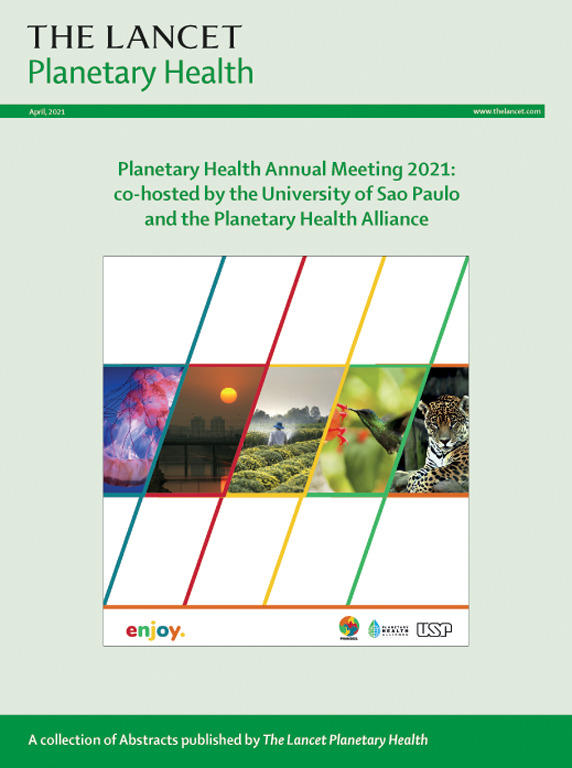病媒种群变化和气候在非洲寨卡病毒传播模式中的作用:一项模拟研究。
IF 24.1
1区 医学
Q1 ENVIRONMENTAL SCIENCES
引用次数: 0
摘要
背景:寨卡病毒(ZIKV)疫情最近引起了重大的全球卫生问题,但在首次发现寨卡病毒的非洲,报告的疫情很少。最近对传播寨卡病毒的埃及伊蚊(Aedes aegypti)的研究或许可以解释这一现象。与分布在非洲以外的埃及伊蚊亚种相比,非洲的埃及伊蚊亚种对叮咬人类的偏好较低,对寨卡病毒感染的易感性也较低。另外,气候可能会强烈限制传播,因为它会影响寨卡病毒和蚊子载体的多种特征。方法:我们使用了一种基于经验数据的建模方法来评估寨卡病毒在非洲的传播风险。我们使用来自实验室实验的数据拟合该模型,并通过比较预测的传播适宜性与在非洲进行的血清患病率调查来验证该模型。此外,我们使用蚊子遗传和基于气候的预测来绘制非洲59个城市中心未来寨卡病毒爆发风险图。研究结果:该模型部分且显著地预测了非洲寨卡病毒传播的历史模式(占血清流行率调查变化的46%)。蚊虫种群遗传通过媒介-宿主接触和媒介能力两种机制对传播的影响比气候更大。如果气候和蚊子遗传种群预测是准确的,并且寨卡病毒在非洲传播的驱动因素没有其他变化,我们预测,到本世纪末,大约四分之三的人口最多的非洲城市将适合寨卡病毒的爆发。解释:蚊子种群水平的基因组变异和气候都是非洲缺乏寨卡病毒暴发的原因。鉴于蚊子遗传学在推动这种模式中的重要性,对蚊子种群的本地基因组监测将有助于预测脆弱社区的疫情。随着人口增长、城市化和气候变化,这将变得越来越重要。资助:普林斯顿大学、法国政府avenir投资计划和法国2030计划、MSDAVENIR和美国国立卫生研究院。本文章由计算机程序翻译,如有差异,请以英文原文为准。
The role of vector population variation and climate in Zika virus transmission patterns in Africa: a modelling study
Background
Zika virus (ZIKV) outbreaks have raised major global health concerns recently, yet reported outbreaks are rare in Africa, where ZIKV was first discovered. Recent studies on Aedes aegypti, the mosquito that transmits ZIKV, might explain this phenomenon. The Ae aegypti subspecies present in Africa shows lower preference for biting humans and reduced susceptibility to ZIKV infection compared with the subspecies distributed outside Africa. Alternatively, climate might strongly limit transmission as it affects multiple traits of ZIKV and the mosquito vector.
Methods
We used a modelling approach informed by empirical data to assess ZIKV transmission risk across Africa. We fitted the model using data from laboratory experiments, and validated the model by comparing predicted transmission suitability with seroprevalence surveys conducted across Africa. Additionally, we used mosquito genetic and climate-based projections to map future ZIKV outbreak risk at 59 urban centres in Africa.
Findings
The model predictions partially and significantly explain historical patterns of ZIKV circulation in Africa (accounting for 46% of the variation in seroprevalence surveys). Mosquito population genetics influence transmission more strongly than climate through two mechanisms: vector–host contact and vector competence. If climate and mosquito genetic population projections are accurate and there are no other changes to drivers of Zika virus transmission in Africa, we predict that approximately three-quarters of the most populous African cities will be suitable for ZIKV outbreaks by the end of the century.
Interpretation
Both population-level genomic variation in mosquitoes and climate contribute to the lack of ZIKV outbreaks in Africa. Given the importance of mosquito genetics in driving this pattern, local genomic surveillance of mosquito populations would help predict outbreaks in vulnerable communities. This will become increasingly important with population growth, urbanisation, and climate change.
Funding
Princeton University, French Government's Investissement d’Avenir and France 2030 programmes, MSDAVENIR, and US National Institutes of Health.
求助全文
通过发布文献求助,成功后即可免费获取论文全文。
去求助
来源期刊

Lancet Planetary Health
Multiple-
CiteScore
28.40
自引率
2.30%
发文量
272
审稿时长
8 weeks
期刊介绍:
The Lancet Planetary Health is a gold Open Access journal dedicated to investigating and addressing the multifaceted determinants of healthy human civilizations and their impact on natural systems. Positioned as a key player in sustainable development, the journal covers a broad, interdisciplinary scope, encompassing areas such as poverty, nutrition, gender equity, water and sanitation, energy, economic growth, industrialization, inequality, urbanization, human consumption and production, climate change, ocean health, land use, peace, and justice.
With a commitment to publishing high-quality research, comment, and correspondence, it aims to be the leading journal for sustainable development in the face of unprecedented dangers and threats.
 求助内容:
求助内容: 应助结果提醒方式:
应助结果提醒方式:


